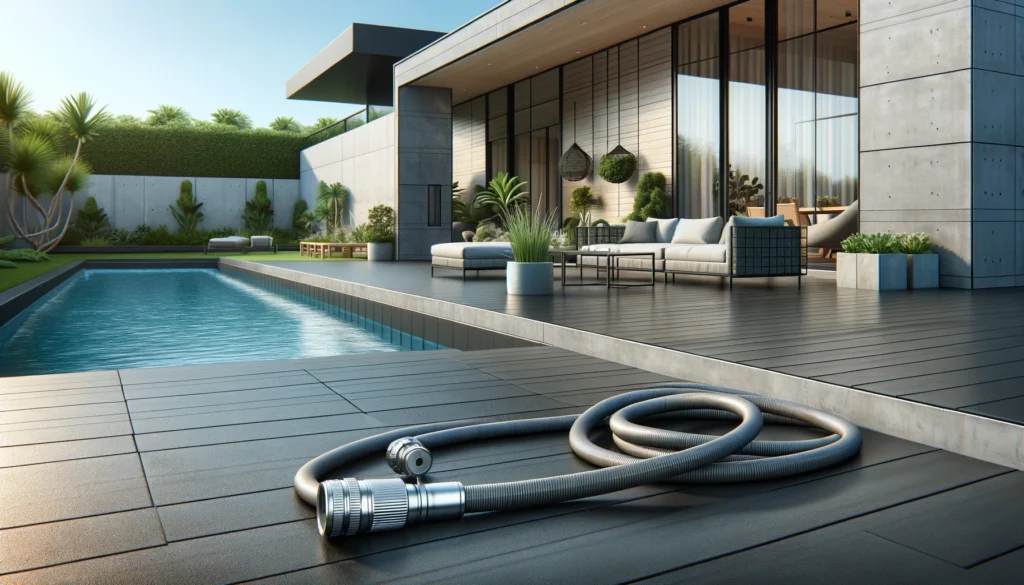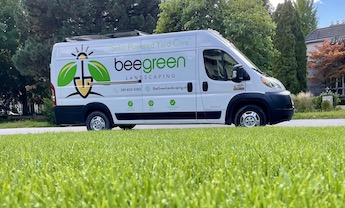Choosing the right garden hose thread size might not be the first thing on your mind when planning your garden watering system, but it’s crucial for a leak-free connection. Whether you’re hooking up a new hose to your tap or connecting various watering accessories, knowing the standard sizes can save you a lot of hassle.
In the world of gardening, not all hose threads are created equal. You’ll encounter terms like “GHT” for Garden Hose Thread or “NPT” for National Pipe Thread, each with its own standard size. Understanding these differences ensures you’re well-equipped to make informed decisions, keeping your garden lush and your watering system efficient.
Importance of Garden Hose Thread Size
When setting up your garden watering system, understanding the significance of the garden hose thread size is crucial for a leak-free experience. Choosing the wrong thread size can lead to water wastage, inefficient watering, and potential damage to your hose and connectors. It’s all about getting the perfect fit.
GHT (Garden Hose Thread) and NPT (National Pipe Thread) are two common thread sizes you’ll encounter. While GHT is specifically designed for garden hoses, making it a go-to for most gardening needs, NPT is used in more industrial applications but might be found in some garden setups. By knowing these standards, you’re equipped to make better purchasing decisions.
Why Right Size Matters
- Leak Prevention: A properly sized thread ensures a snug fit between the hose and its attachments, preventing leaks that can undermine your garden’s health and inflate water bills.
- Durability: Mismatched connectors can strain your hose and fixtures, leading to early wear-out or damage. Correct thread size promotes longer lifespan of your watering equipment.
- Efficiency: With the right connection, water flow is optimised, ensuring your plants receive the adequate hydration they need without waste or excess.
Choosing the Correct Thread Size
To determine the right thread size for your garden hose, start by checking any existing equipment for markings that indicate size. If no markings are visible, a simple measurement can guide you. Thread size is often measured in inches, with the diameter being the key measurement for garden hoses.
Here is a quick guide:
| Thread Type | Diameter (inches) |
|---|---|
| GHT | 3/4 |
| NPT | 1/2 to 1 |
Remember, not all hoses and fixtures are created equal. Always cross-check the product specifications before making a purchase to ensure compatibility. Investing a little time in understanding and choosing the correct garden hose thread size pays off in a well-maintained garden and efficient watering system.
Standard Thread Sizes in Gardening

When delving into the world of gardening, understanding the standard thread sizes for garden hoses is essential for maintaining an efficient and leak-free watering system. Typically, the most common thread size you’ll encounter is the Garden Hose Thread (GHT), which is the standard in most countries. GHT diameters usually measure at 3/4 inches for residential hoses, ensuring a suitable flow rate for garden watering needs.
However, for those needing connections to non-garden water sources or industrial applications, you might come across the National Pipe Thread (NPT). Unlike GHT, NPT is designed for a tighter seal and is used in situations requiring a secure fit, with sizes varying more significantly.
Here’s a quick comparison to highlight the differences:
| Thread Type | Diameter | Use Case |
|---|---|---|
| GHT | 3/4 inches | Residential garden hoses |
| NPT | 1/2 – 6 inches | Industrial and non-garden applications |
It’s crucial to select the correct adapter if you’re integrating your garden hose with an NPT fitting, as forcing incompatible connections can lead to damage and leaks.
To accurately determine what thread size your existing equipment requires, you can:
- Check the markings on your hose or tap.
- Measure the outer diameter of your hose connector.
- Consult with a gardening specialist or reference the manufacturer’s specifications.
Remember, a well-chosen hose thread can dramatically reduce water wastage, prevent hose wear and tear, and improve your overall garden maintenance efficiency. By understanding the standards and measuring correctly, you’re on your way to creating a more sustainable and effective watering system.
Difference between GHT and NPT

When you’re navigating the world of garden hoses and fixtures, understanding the distinction between Garden Hose Thread (GHT) and National Pipe Thread (NPT) is crucial. Both types of threading serve different purposes and are not interchangeable, which could lead to leaks or damage if mixed up.
GHT, specifically designed for garden hoses, is characterized by its size and threading. All GHT hoses in the U.S. adhere to a standard 3/4-inch diameter. This uniformity ensures that most garden hoses and accessories can connect without the need for adapters. It’s tailored for easy, hand-tight fittings, making it ideal for residential use where frequent changes or relocations of the hose might occur.
On the other hand, NPT is used broadly across various types of plumbing and industrial applications, not just gardening. Unlike GHT, NPT connections are tapered and require thread sealant or Teflon tape to ensure a leak-proof seal. The threads per inch (TPI) and the diameter of NPT fittings can vary, offering flexibility for diverse applications but also requiring precise matching of components.
| Thread Type | Typical Use | Diameter | Threads Per Inch (TPI) |
|---|---|---|---|
| GHT | Garden hoses | 3/4 inch | Not standardised |
| NPT | Plumbing, industrial use | Variable | Variable |
The practical takeaway is that while GHT connections might seem straightforward, ensuring you’re not trying to force a GHT hose onto an NPT fitting—or vice versa—is essential. Each has its domain of application, ensuring efficiency and preventing wear or damage. By keeping these distinctions clear, you’ll maintain a more effective and hassle-free watering system in your garden.
Choosing the Right Thread Size for Your Garden

Picking the right thread size for your garden hose might seem straightforward, but it’s pivotal for maintaining an efficient and leak-free watering system. Before you head out to purchase a new garden hose or fittings, understanding the nuances behind hose thread sizes could save you a lot of hassle.
Garden Hose Thread (GHT) vs. National Pipe Thread (NPT)
First off, you’ll encounter two main types of threads when looking for garden hoses and their accessories: Garden Hose Thread (GHT) and National Pipe Thread (NPT). The key difference between them is their application and interchangeability.
- GHT, commonly found on garden hoses, has a standard size of 3/4-inch diameter. It’s designed for residential use and doesn’t require tools to connect, as the fittings are typically designed to be hand-tightened.
- NPT, on the other hand, is primarily used in plumbing and industrial settings. Its connections are tapered, creating a more durable seal but requiring a sealant to ensure they’re leak-proof.
Identifying Your Needs
To select the appropriate thread size, consider the following:
- Purpose: Determine whether the hose will be used for general gardening or if it needs to fit into an existing plumbing setup. This decision will heavily influence whether you should opt for GHT or NPT connections.
- Compatibility: Ensure that any new hose or fitting is compatible with your existing equipment. Mixing GHT with NPT without the proper adapter can lead to damage and leaks.
- Length and Diameter: Longer hoses may require a more robust connection to maintain water pressure. Consider the diameter of the hose as well; a larger diameter can carry more water, useful for more extensive gardens.
Understanding these aspects will not only help in choosing the right thread size but will also contribute to a more sustainable and efficient watering system for your garden. Ensuring compatibility and appropriateness of your garden hose and its connections is crucial.
Tips for Leak-Free Connections

When you’re setting up your garden watering system, ensuring leak-free connections is key to maintaining efficiency and conservation. The thread size and type play crucial roles, but there’s more to a watertight setup. Here are several tips to guide you through achieving those secure, leak-free connections with your garden hose.
Check Compatibility
Before anything else, double-check the compatibility of your garden hose with the attachment or faucet. Using a hose with a GHT fitting won’t pair well with an NPT system and vice versa without the appropriate adapter. Matching the thread type is the first step towards a leak-free connection.
Use Quality Fixtures and Fittings
Invest in high-quality hoses, attachments, and fittings. These typically offer better materials and construction, leading to a snugger fit and longer-lasting seal. While they might come with a higher upfront cost, their durability and performance can save you money and hassle in the long run.
Apply Teflon Tape
For those connections that require a bit more sealing power—especially with NPT threading—wrap the male threads with Teflon tape. This helps fill any gaps in the threads, preventing water from leaking through. Just ensure you’re applying the tape in the right direction and not overwrapping, which can cause its own issues.
Regular Maintenance Checks
Regularly inspect your hose and its connections for signs of wear or damage. Over time, fittings can become loose, or the hose itself may sustain wear that compromises the connection. Early detection of such issues allows for timely replacements or adjustments, keeping your system leak-free.
By paying attention to these aspects and taking proper care, you can significantly reduce the likelihood of leaks in your garden watering system. Remember, a little effort in maintenance and setup can go a long way in preserving water and ensuring your garden flourishes.
Conclusion
Choosing the right thread size for your garden hose is crucial for a leak-free and efficient watering system. Remember, understanding the difference between GHT and NPT is key to ensuring compatibility and effectiveness. By implementing the tips provided—like checking compatibility, opting for quality fixtures, applying Teflon tape to NPT threads, and regular maintenance—you’re setting yourself up for success. With these practices in place, you’ll enjoy a robust watering system that stands the test of time, keeping your garden lush and thriving.
Frequently Asked Questions (FAQ)
What is the importance of selecting the correct thread size for garden hoses?
Selecting the correct thread size is crucial to maintaining efficiency in your garden’s watering system and preventing leaks. It ensures that the hose fits perfectly with the tap or fixture, providing a seamless, leak-free connection.
What are the main types of threads for garden hoses?
The two main types of threads for garden hoses are Garden Hose Thread (GHT) and National Pipe Thread (NPT). GHT is specifically designed for garden hoses, while NPT is used for a wider range of piping connections.
How can I achieve a leak-free connection in my garden hose system?
To achieve a leak-free connection, ensure the thread types are compatible, use quality fixtures, apply Teflon tape if connecting NPT threads, and conduct regular maintenance checks to prevent leaks.
What role does regular maintenance play in preventing garden hose leaks?
Regular maintenance is vital for preventing leaks. It involves checking for wear and tear, ensuring connections are tight, and replacing faulty fixtures or hoses as necessary. This keeps the watering system functioning effectively.
How does applying Teflon tape help with NPT threading in garden hoses?
Applying Teflon tape to NPT threading helps by filling in any gaps between the threads, creating a more secure and watertight seal. It’s an effective way to prevent leaks in connections that use NPT threading.


